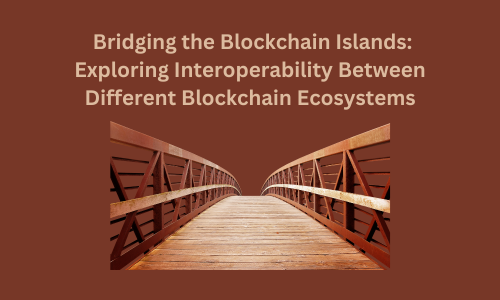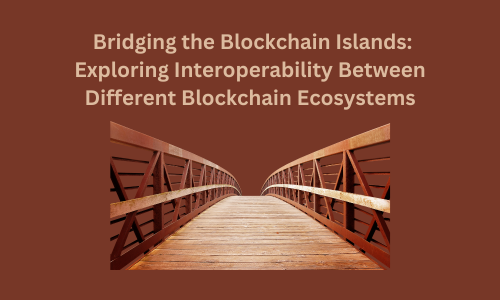


In the rapidly evolving world of blockchain technology, the concept of interoperability has emerged as a critical piece in the puzzle of decentralized innovation. Blockchain ecosystems, though powerful in their isolated capacities, have traditionally operated as self-contained networks, each with its unique protocols, governance, and limitations. However, the future of blockchain lies in the seamless communication between these networks—a vision that hinges on achieving true interoperability. This article delves into the current state, technological approaches, real-world examples, challenges, and future prospects of blockchain interoperability.
At its core, a blockchain is a decentralized ledger, but not all blockchains are created equal. Bitcoin, Ethereum, Binance Smart Chain, Polkadot, Cosmos, and countless others each have their ecosystems, thriving with unique communities, applications, and currencies. However, these networks are often siloed, meaning that a user operating on one blockchain cannot easily transact or communicate with another.
This fragmentation presents significant challenges. For example, a decentralized finance (DeFi) application on Ethereum cannot natively access liquidity or data from a similar application on Binance Smart Chain. This lack of cross-chain communication not only limits the potential of blockchain technology but also leads to inefficiencies and missed opportunities for innovation.
Blockchain interoperability refers to the ability of different blockchain networks to communicate, share data, and conduct transactions with each other in a trustless, decentralized manner. It allows value and information to flow freely across different platforms, making it possible to build more complex and interconnected decentralized applications (dApps).
Key concepts in achieving blockchain interoperability include:
Various technological approaches are being developed to tackle the challenge of blockchain interoperability:
Layer 1 vs. Layer 2 Solutions: Layer 1 solutions refer to base-layer blockchains that incorporate interoperability directly into their architecture, such as Polkadot and Cosmos. Layer 2 solutions, on the other hand, are built on top of existing blockchains (like Ethereum) to facilitate interoperability without changing the core protocol.
Sidechains and Relay Chains: Sidechains are separate blockchains that run in parallel to a main chain and allow tokens or data to be transferred between the two. Relay chains, like Polkadot’s, serve as a central hub that connects various independent blockchains, known as parachains, allowing them to interact with each other.
Hub-and-Spoke Models: Projects like Cosmos use a hub-and-spoke model, where multiple blockchains (spokes) connect to a central hub blockchain. This hub manages the communication and transactions between the spokes, enabling interoperability across the ecosystem.
Several projects are pioneering the path toward blockchain interoperability:
Polkadot: Created by Ethereum co-founder Gavin Wood, Polkadot is a multi-chain network that enables different blockchains to operate together seamlessly. Polkadot’s relay chain connects various parachains, which can be customized for specific use cases while still benefiting from shared security and interoperability.
Cosmos: Dubbed the "Internet of Blockchains," Cosmos is a decentralized network of independent parallel blockchains, each powered by Byzantine Fault Tolerant (BFT) consensus algorithms. Cosmos uses the Inter-Blockchain Communication (IBC) protocol to enable these blockchains to communicate and share data.
Wanchain: Wanchain aims to create a super financial market for digital assets by enabling cross-chain transactions. It uses a unique mechanism involving locked accounts and validators to ensure secure and seamless transactions across different blockchains.
While the vision of blockchain interoperability is compelling, several challenges and limitations must be addressed:
Security Risks: Interoperability introduces new vectors for attacks. Cross-chain bridges, for example, can be vulnerable to hacks if not properly secured, leading to significant losses.
Complexity and Scalability: Facilitating interoperability is technically complex, often requiring significant resources and sophisticated infrastructure. This complexity can also affect scalability, as the added layers of communication and consensus may slow down transactions.
Lack of Standardization: The absence of universal standards across different blockchain networks makes interoperability challenging. Each blockchain has its protocols, consensus mechanisms, and data structures, complicating the process of creating seamless cross-chain solutions.
Despite the challenges, the future of blockchain interoperability is promising. As research and development in this area continue to advance, we are likely to see the emergence of more robust and secure solutions that address current limitations. Innovations such as Layer 2 scaling solutions, improved cross-chain protocols, and better security models will play crucial roles in realizing the full potential of blockchain interoperability.
Moreover, interoperability is a cornerstone of the Web3 vision, where decentralized applications and services can operate across various platforms, free from the constraints of centralized control. This interconnected web of blockchains could lead to a more open, inclusive, and decentralized internet where data, assets, and identities can move seamlessly across different networks.
Blockchain interoperability is not just a technical challenge—it is a key enabler of the decentralized future. By breaking down the silos that currently isolate blockchain ecosystems, interoperability allows for greater collaboration, innovation, and adoption. As the technology matures, the dream of a fully interconnected blockchain landscape, where data and value flow freely and securely, is becoming increasingly attainable. The road ahead is challenging, but the rewards are immense, offering a future where blockchain technology can reach its full potential.
Disclaimer: This article is provided for informational purposes only. It is not offered or intended to be used as legal, tax, investment, financial, or other advice.
